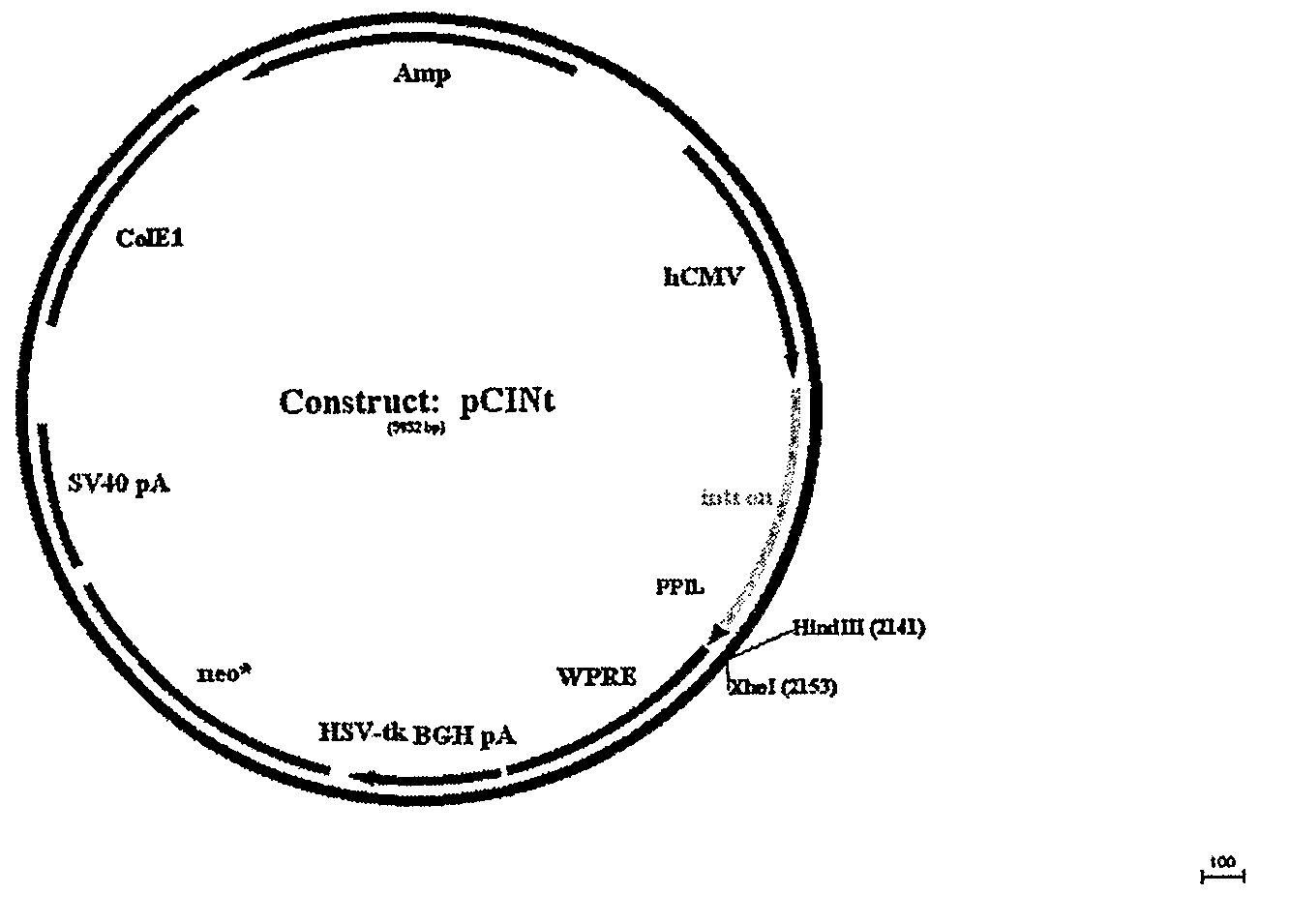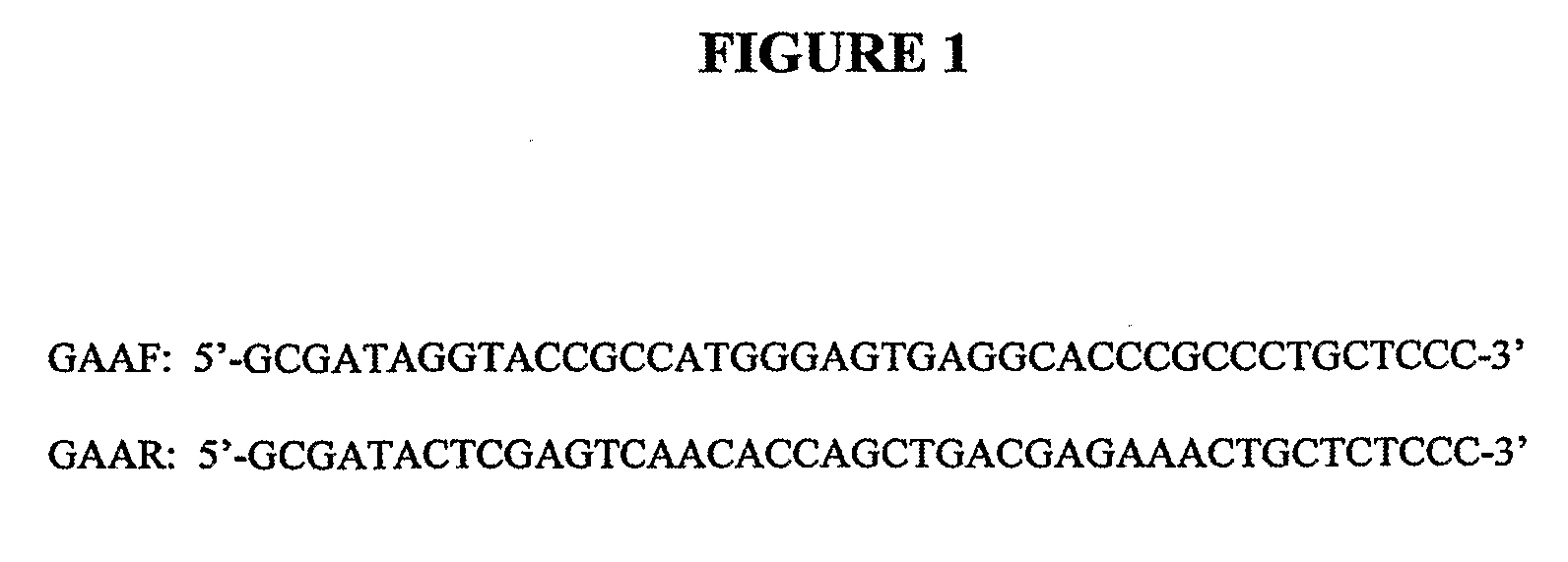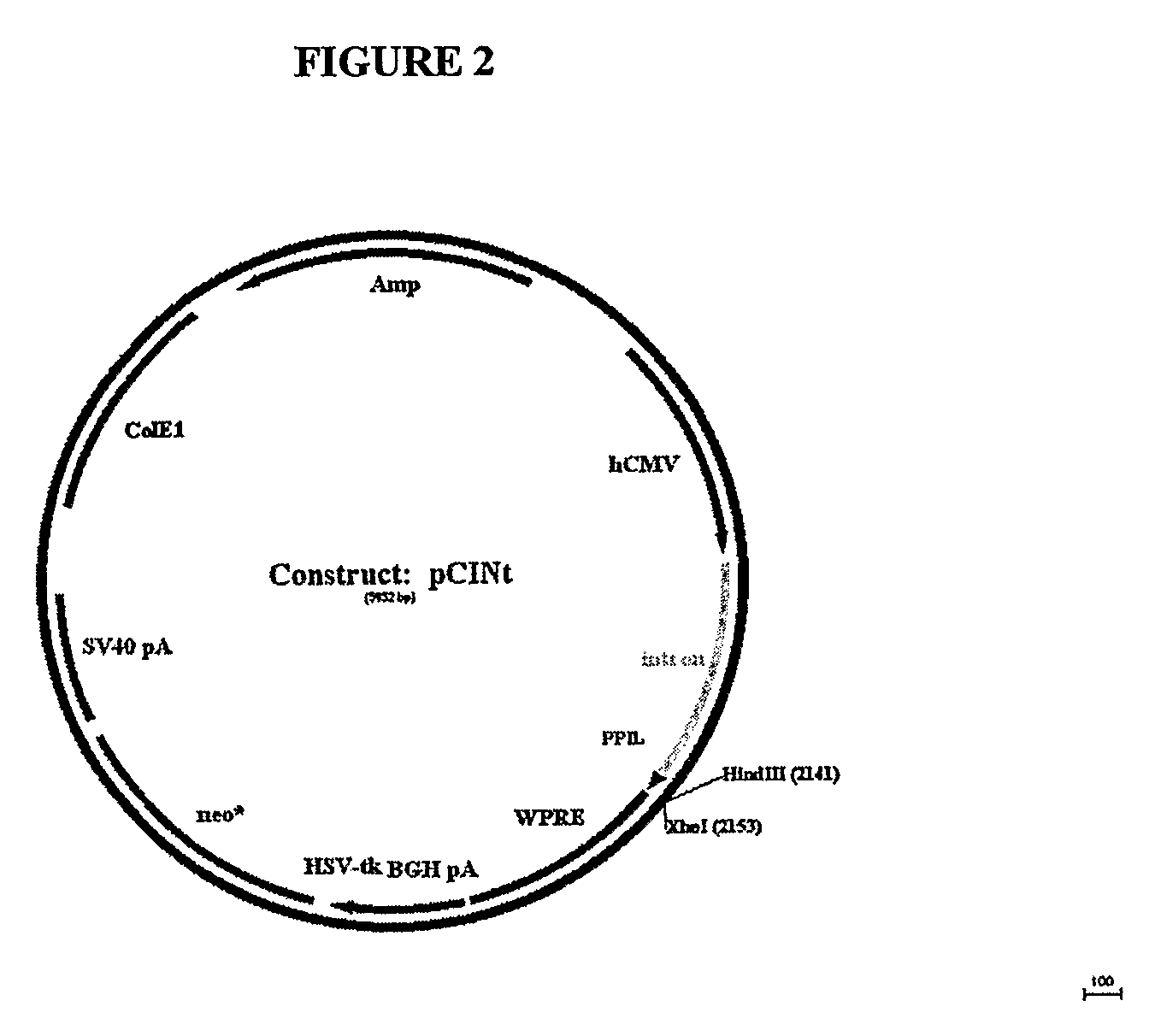Manufacture of Highly Phosphorylated Lysosomal Enzymes and Uses Thereof
- Summary
- Abstract
- Description
- Claims
- Application Information
AI Technical Summary
Benefits of technology
Problems solved by technology
Method used
Image
Examples
example i
Development of Recombinant G71 Expressing Alpha-Glucosidase (GAA)
[0160]In order to produce a recombinant, highly phosphorylated lysosomal enzyme that was useful therapeutically at low doses, it was first necessary to develop a cell line that provided improved phosphorylation levels.
[0161]G71 cells (Rockford K. Draper) were derived directly from CHO-K1 (ATCC CCL-61). G71 was maintained at 34° C. in BioWhittaker UltraCHO medium supplemented with 2.5% fetal calf serum, 2 mM glutamine, gentamycin and amphotericin. Human GAA was amplified from human liver MRNA (Clontech 6510-1) by high-stringency PCR using the primers designated GAAF and GAAR (FIG. 1).
[0162]The amplified GAA sequence was subcloned using flanking KpnI and XhoI sites into mammalian expression vector pCINt (BioMarin) (FIG. 2). The expression vector contained the human CMV enhancer-promoter linked to the rabbit β-globin IVS2 intron and the multiple cloning site from pcDNA3.1 (+) (Invitrogen, Carlsbad, Calif.). Efficient tran...
example ii
Cell Line Development
[0163]To obtain highly phosphorylated GAA, the GAA containing expression vector was transfected into G71 CHO cells.
[0164]G71 was transfected with linearized expression plasmid and recombinants were selected in 200 μ / mL G418. After a first round of subcloning of transfectants, four GAA positive cell lines were selected using the fluorescent substrate, 4MU-alpha-glucoside, an enzyme produced by the cells (Reuser, et al., Am J Hum Genet. 1978 30:132-43, 1978). This substrate yields 4-methylumbelliferone (4 MU) after hydrolysis, which is detectable by a characteristic blue fluorescence when illuminated with UV-light (approximately 366 nm). These positive G71 clones were designated CIN4, 5, 6 and 11. Cell-specific productivity ranged from 1.8 and 4.6 pg / cell of product. The four CIN cell lines were analyzed for enzyme production in spinners with microcarriers.
[0165]For comparison, dihydrofolate reductase deficient CHO cells, DUXB11, overexpressing GAA were prepared b...
example iii
Culture of GAA Expressing G71 Cells
[0166]To measure the enzyme production from the G71 transfectants, the cell lines exhibiting the greatest amount of enzymatic activity, as measured above by 4 MU assay, were further assessed for enzyme production in cell culture.
[0167]G71 transfected cell lines were cultured in JRH Excell 302 medium supplemented with 2 mM glutamine and 5% fetal calf serum. Cells were seeded onto Cytopore microcarriers (Pharmacia / Amersham) and grown in 200 mL spinner flasks. Serum was removed by dilution over the course of a week until BSA was undetectable by ELISA. The four CIN lines were analyzed for GAA production. CIN11 titer was the best producer at approximately 4 mg / L / day. DUXB11 3.1.36 titer was approximately 1 mg / L / day.
[0168]The best candidate from this screen, CIN11 (also known as G71GAA2) was scaled-up to bioreactor for production of pre-clinical material.
PUM
| Property | Measurement | Unit |
|---|---|---|
| Level | aaaaa | aaaaa |
Abstract
Description
Claims
Application Information
 Login to View More
Login to View More - R&D
- Intellectual Property
- Life Sciences
- Materials
- Tech Scout
- Unparalleled Data Quality
- Higher Quality Content
- 60% Fewer Hallucinations
Browse by: Latest US Patents, China's latest patents, Technical Efficacy Thesaurus, Application Domain, Technology Topic, Popular Technical Reports.
© 2025 PatSnap. All rights reserved.Legal|Privacy policy|Modern Slavery Act Transparency Statement|Sitemap|About US| Contact US: help@patsnap.com



